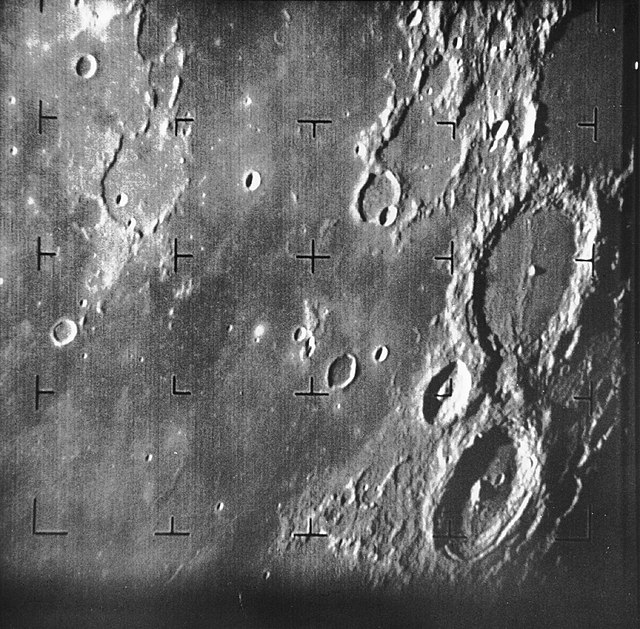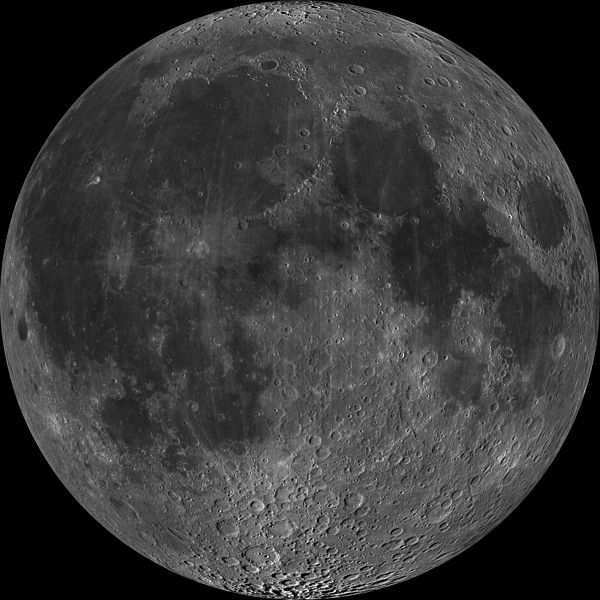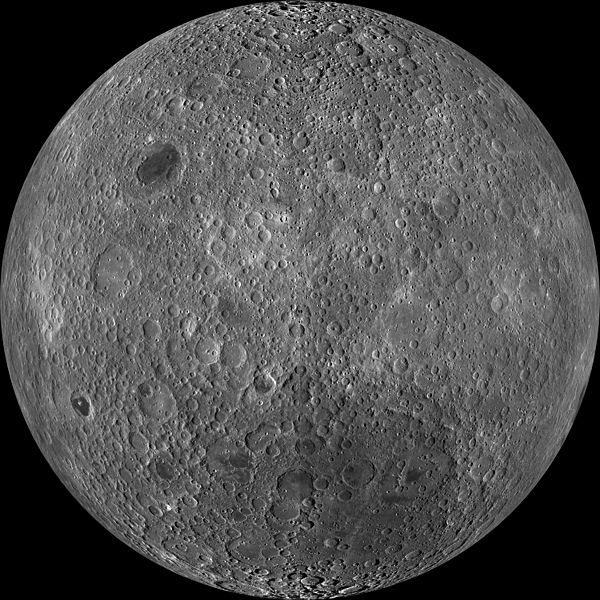The Ranger program was a series of uncrewed space missions by the United States in the 1960s whose objective was to obtain the first close-up images of the surface of the Moon. The Ranger spacecraft were designed to take images of the lunar surface, transmitting those images to Earth until the spacecraft were destroyed upon impact. A series of mishaps, however, led to the failure of the first six flights. At one point, the program was called "shoot and hope". Congress launched an investigation into "problems of management" at NASA Headquarters and Jet Propulsion Laboratory. After two reorganizations of the agencies, Ranger 7 successfully returned images in July 1964, followed by two more successful missions.
First image of the Moon returned by a Ranger mission (Ranger 7 in 1964)
Program Ranger Organization Chart
Ranger block I spacecraft diagram. (NASA)
A Ranger probe undergoing restoration at the Udvar-Hazy Center
Selenography is the study of the surface and physical features of the Moon. Like geography and areography, selenography is a subdiscipline within the field of planetary science. Historically, the principal concern of selenographists was the mapping and naming of the lunar terrane identifying maria, craters, mountain ranges, and other various features. This task was largely finished when high resolution images of the near and far sides of the Moon were obtained by orbiting spacecraft during the early space era. Nevertheless, some regions of the Moon remain poorly imaged and the exact locations of many features are uncertain by several kilometers. Today, selenography is considered to be a subdiscipline of selenology, which itself is most often referred to as simply "lunar science." The word selenography is derived from the Greek word Σελήνη and γράφω graphō, meaning to write.

"Lunar Day," from the book Recreations in Astronomy by H. D. Warren D. D., 1879. Later study showed that the surface features are much more rounded due to a long history of impacts.
A study of the Moon from Robert Hooke's Micrographia of 1665
Lunar near side
Lunar far side








